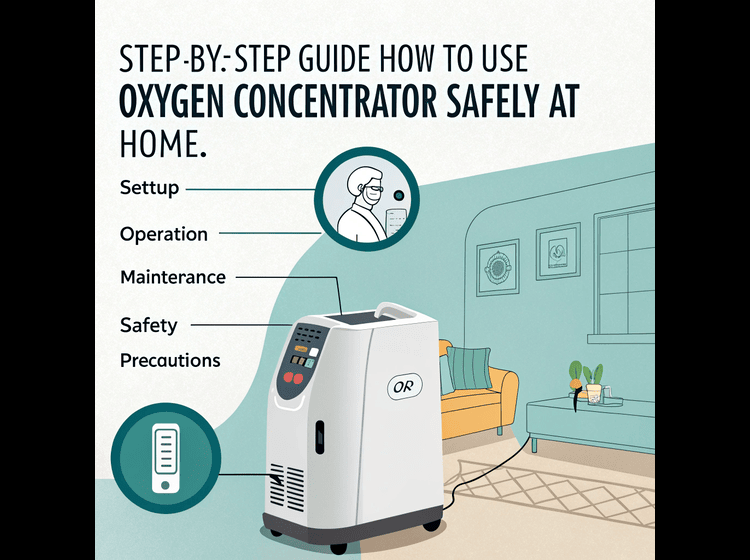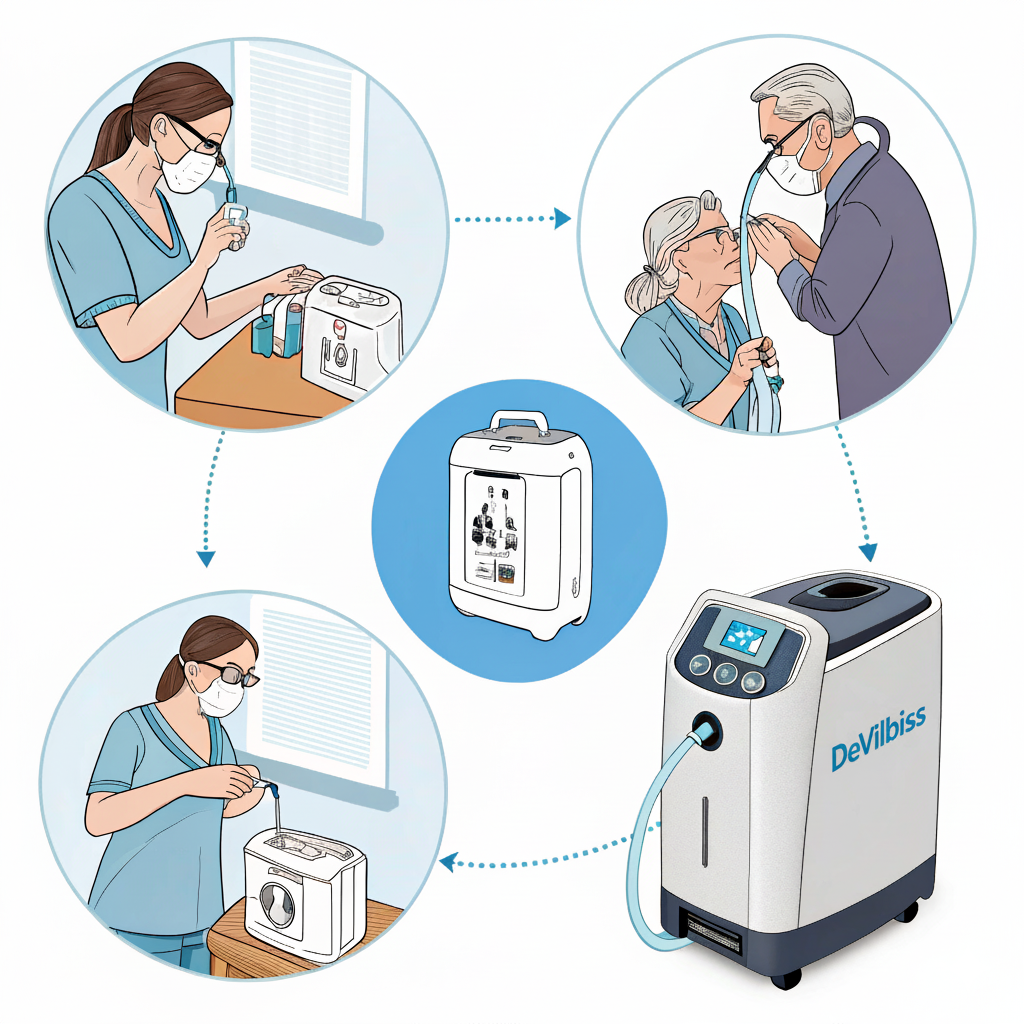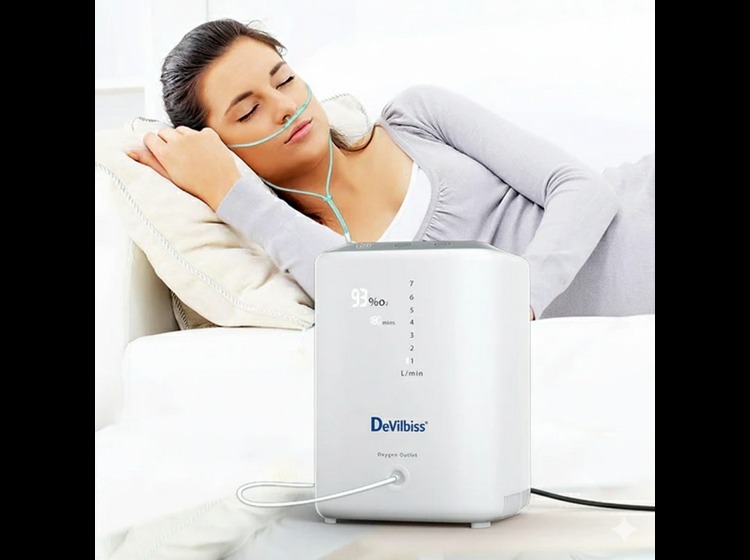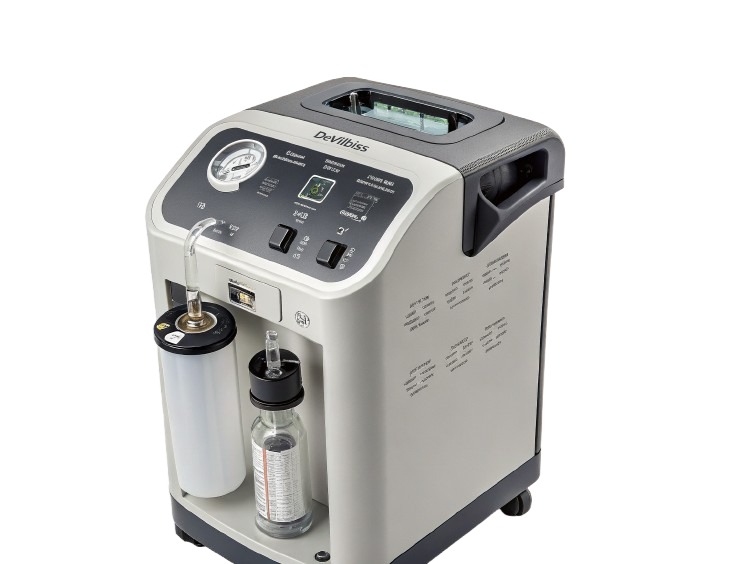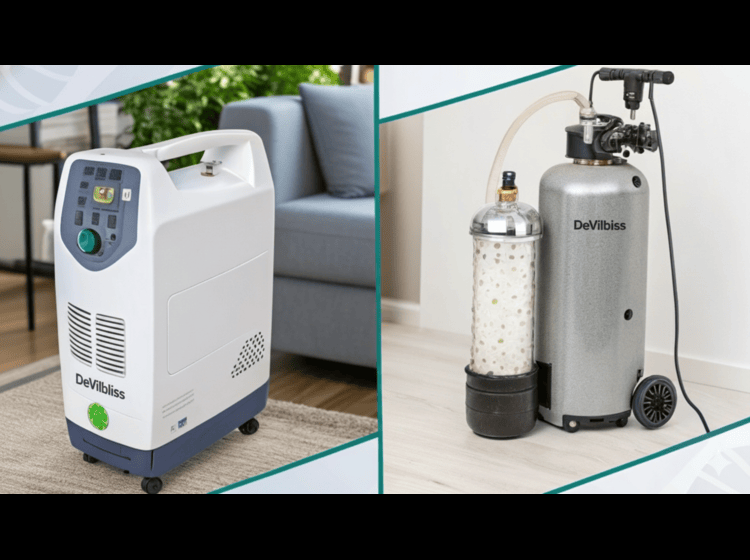Step-by-step guide - How to use an oxygen concentrator safely at home”
This guide provides a clear step-by-step process on how to use an oxygen concentrator safely at home, along with maintenance and safety tips to ensure reliable and uninterrupted therapy.
Guide of oxygen concentrator safely at Home
1. Understanding How an Oxygen Concentrator Works
Before using the device, it’s important to know what it does. An oxygen concentrator takes in room air (which contains about 21% oxygen), filters out nitrogen, and delivers air with up to 90–96% pure oxygen. Unlike oxygen cylinders, it doesn’t require refilling — it continuously produces oxygen as long as it has power.Main parts include:
- Power switch and display panel
- Flow meter (to adjust oxygen flow rate)
- Humidifier bottle (for moisture in oxygen) Nasal cannula or oxygen mask
- Filters (air inlet and HEPA filters)
2. Step-by-Step Setup Instructions
Step 1: Choose the Right Location Place the concentrator in a well-ventilated area, at least 1–2 feet away from walls, furniture, and curtains. Avoid humid areas like bathrooms or near windows where dust and moisture can enter. Ensure there’s no open flame or electrical spark nearby — oxygen supports combustion.Step 2: Plug in the Device Use a dedicated electrical socket with stable voltage. Avoid using extension cords or connecting multiple appliances on the same outlet. Make sure the power cord is not bent or damaged.
Step 3: Attach the Humidifier Bottle (if prescribed) Fill the bottle with distilled or sterile water up to the indicated level. Secure it tightly onto the machine’s outlet. Never overfill the bottle — excess water may enter the tubing.
Step 4: Connect the Nasal Cannula or Oxygen Mask Attach one end of the tubing to the outlet nozzle (or humidifier bottle, if attached). Place the other end — the nasal cannula — gently into your nostrils or wear the oxygen mask.
Step 5: Turn On and Adjust the Flow Rate Switch on the concentrator and wait 1–2 minutes for it to start producing oxygen. Use the flow meter knob to adjust the oxygen flow rate according to your doctor’s prescription (e.g., 2 LPM, 5 LPM, etc.). You can check the ball indicator on the flow meter — it should float steadily at the prescribed level.
Step 6: Check for Oxygen Output Feel the oxygen flow from the nasal cannula. If no air comes out, check the tubing, connections, and power. Some models show oxygen purity levels; ensure it’s above 90%.
3. During Use: Safety and Comfort Tips
- Do not smoke or allow smoking near the concentrator.
- Avoid using flammable products (like alcohol-based sanitizers or aerosol sprays) nearby.
- If you feel dizzy, short of breath, or experience discomfort, stop the machine and contact your doctor immediately.
- Ensure tubing is not kinked or twisted — this can block oxygen flow.
- Keep children and pets away from the concentrator to prevent accidental damage.
4. After Use: Power Off and Clean Properly
When you’re done using the concentrator for the day or need to move it:- Turn the flow meter knob to zero.
- Switch off the device and unplug it.
- Remove and empty the humidifier bottle. Rinse it with warm water and mild soap.
- Allow all parts to air dry before reassembling.
- Wipe the outer surface of the concentrator with a clean, damp cloth once a week.
5. Common Mistakes to Avoid
Wrong flow rate: Using too high or too low flow without medical advice can harm your health.Using tap water: Tap or mineral water in the humidifier can cause mineral deposits and bacterial growth.
Poor ventilation: The concentrator needs constant airflow; blocked vents can cause overheating.
Neglecting power backup: In areas like Chennai with frequent power cuts, keep a UPS or small oxygen cylinder ready.
6. Safety Precautions for Long-Term Use
- Install a smoke detector in the room where you use the concentrator.
- Keep fire extinguishers accessible.
- Store the machine away from direct sunlight and heat sources.
- Always keep emergency contact numbers (doctor, supplier, service provider) handy.
- If you’re using a portable concentrator, charge batteries fully before traveling.
7. When to Call a Professional
Contact your service provider immediately if:- The concentrator shows alarm lights or unusual noise.
- Oxygen flow suddenly stops even when the machine is on.
- There’s a burning smell or excessive heat from the device.
- You notice reduced oxygen purity or water leakage.
Conclusion
Oxygen Concentrator Sale DeVilbiss brand is well-known for its durable, high-quality oxygen concentrators.These machines with features like quiet performance, steady oxygen flow, and easy maintenance, they’re an excellent choice for
Step-by-step guide - How to use an oxygen concentrator safely at home” oxygen concentrator have become essential medical devices for people with respiratory conditions such as COPD, asthma, pneumonia, and
Oxygen Concentrator vs Cylinder – Which Is Better for Home Use? When it comes to home oxygen therapy, choosing the right device is crucial for your health, comfort, and safety.
How Much Does Oxygen Concentrator Rental Cost in Chennai? When someone is advised to use an oxygen concentrator at home—whether due to chronic respiratory conditions, post-COVID recovery, or other medical
Oxygen Concentrator vs Cylinder — Which Is Safer? When it comes to oxygen therapy, one of the most common questions patients and caregivers ask is: “Which is safer — an
Oxygen Concentrator Maintenance Checklist A oxygen concentrator If you or a loved one relies on an , you know how vital it is to ensure it functions properly every day.
Reliable Oxygen Concentrator for Clinic In modern medical care, a reliable oxygen concentrator is one of the most essential pieces of equipment for any clinic or healthcare facility. Whether it’s
DeVilbiss Oxygen Concentrator Dealer When it comes to oxygen therapy and respiratory care, choosing the right equipment and dealer makes all the difference. Among the leading names in the global
High Flow Oxygen Concentrator for Cardiac Patients For individuals with heart conditions, maintaining proper oxygen levels is crucial. A high flow oxygen concentrator provides a steady and controlled supply of
Oxygen Concentrator for Post Cardiac Intervention Recovering from a cardiac intervention—such as angioplasty, bypass surgery, or stent placement—requires special care and monitoring. One key factor that supports faster and safer

